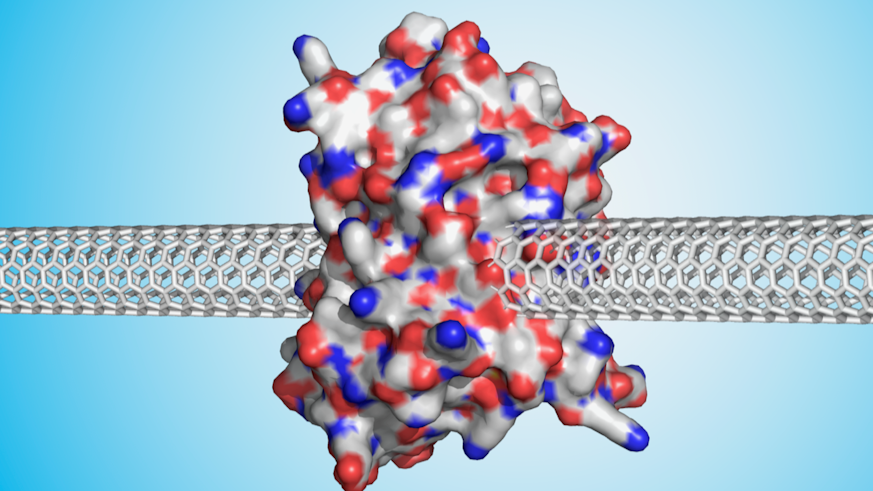New research ‘Clicks’ biology and nanomaterials together
1 February 2018

Research at Cardiff University has built molecular bridges between nano-carbons and proteins that should inspire new approaches to generating bionano-materials.
Collaborative research between the Dafydd Jones group at Cardiff University’s School of Biosciences and Queen Mary University has utilised molecular engineering to address problems in combining nano-carbons and proteins.
Nano-carbon materials, like graphene or carbon nanotubes, are considered to be the next generation of ‘wonder materials’ due to their useful molecular properties which can be valuable for nanotechnology. Similarly, proteins are vital within nature, undertaking all useful processes required for life by acting like nano-machines.
The useful properties of proteins and nano-carbon has led to great effort in marrying their properties together by combining them at a molecular level to generate biohybrid systems.
These new systems have the potential to be used in molecular electronics or health-detecting sensors, however their assembly at a molecular level has proved difficult.
Research by Cardiff University used a process in synthetic biology called Click Chemistry to solve these issues.
Dafydd Jones, Cardiff University School of Biosciences, said: “Building these new systems on a very small scale has its difficulties.
“As these biohybrid systems are entirely new, it is like trying to assemble flat-pack furniture without the instructions – you will get a jumbled product. But our research has been able to address this problem by using principles of molecular engineering.
“By using synthetic biology, we reprogrammed the genetic code for the proteins to allow us to introduce new chemistry, which is not present in nature.
By using this technique, we attached proteins to carbon nanotubes in a one-to-one manner. We used the protein as a molecular bridge, joining together the two nanotubes, using a reaction called Click Chemistry.
“This allows us to harness the useful functions of the nano-carbons and the proteins, generating novel nano-biohybrid complexes that can be used to construct devices for use in molecular electronics, bioLEDs and ultrasensitive biosensing systems.
“This research is an exciting new leap forward in the development of biohybrid materials that hold great potential in technological advances in electronics and monitoring health.”